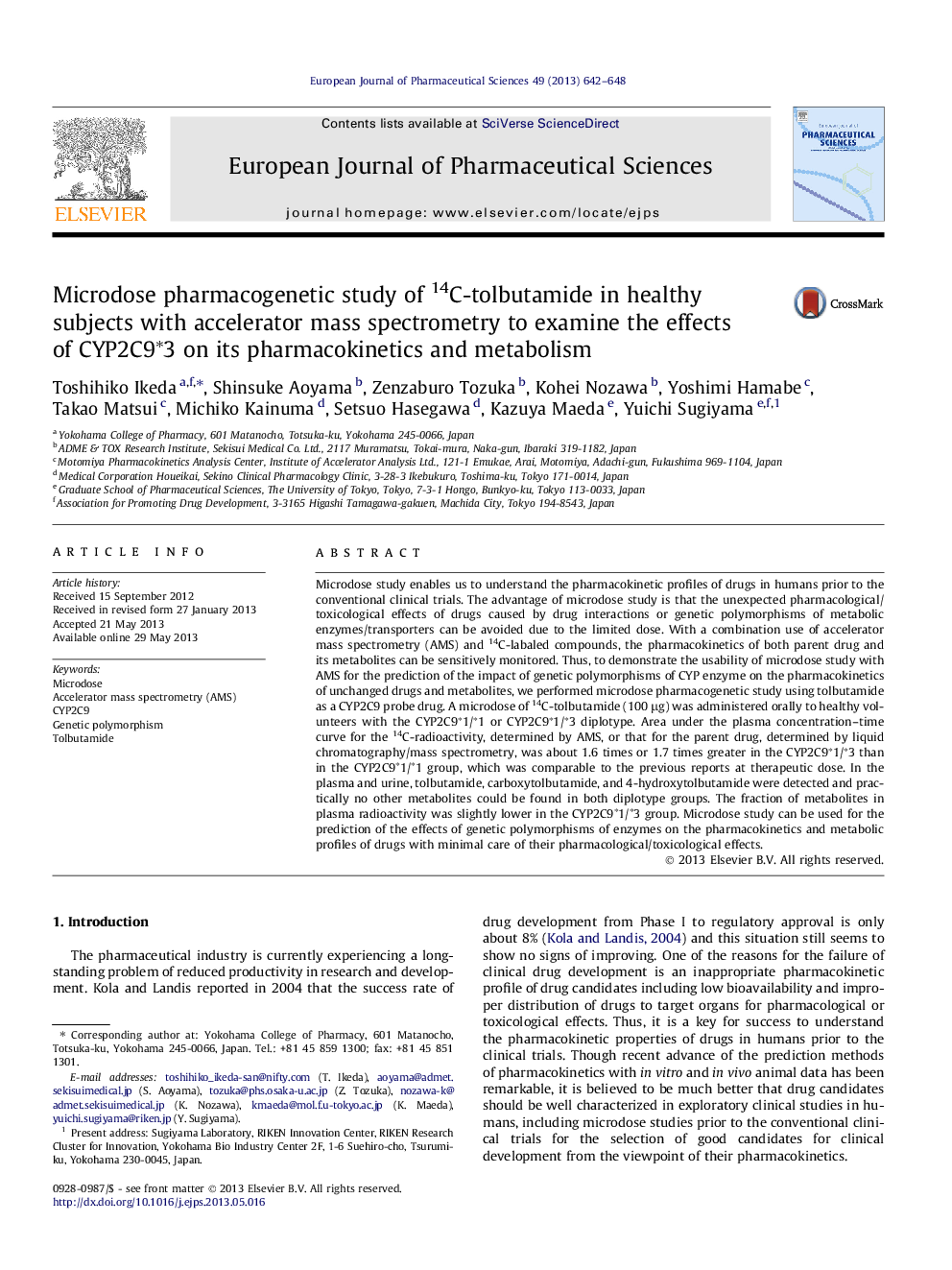| Article ID | Journal | Published Year | Pages | File Type |
|---|---|---|---|---|
| 2480858 | European Journal of Pharmaceutical Sciences | 2013 | 7 Pages |
Microdose study enables us to understand the pharmacokinetic profiles of drugs in humans prior to the conventional clinical trials. The advantage of microdose study is that the unexpected pharmacological/toxicological effects of drugs caused by drug interactions or genetic polymorphisms of metabolic enzymes/transporters can be avoided due to the limited dose. With a combination use of accelerator mass spectrometry (AMS) and 14C-labaled compounds, the pharmacokinetics of both parent drug and its metabolites can be sensitively monitored. Thus, to demonstrate the usability of microdose study with AMS for the prediction of the impact of genetic polymorphisms of CYP enzyme on the pharmacokinetics of unchanged drugs and metabolites, we performed microdose pharmacogenetic study using tolbutamide as a CYP2C9 probe drug. A microdose of 14C-tolbutamide (100 μg) was administered orally to healthy volunteers with the CYP2C9∗1/∗1 or CYP2C9∗1/∗3 diplotype. Area under the plasma concentration–time curve for the 14C-radioactivity, determined by AMS, or that for the parent drug, determined by liquid chromatography/mass spectrometry, was about 1.6 times or 1.7 times greater in the CYP2C9∗1/∗3 than in the CYP2C9∗1/∗1 group, which was comparable to the previous reports at therapeutic dose. In the plasma and urine, tolbutamide, carboxytolbutamide, and 4-hydroxytolbutamide were detected and practically no other metabolites could be found in both diplotype groups. The fraction of metabolites in plasma radioactivity was slightly lower in the CYP2C9∗1/∗3 group. Microdose study can be used for the prediction of the effects of genetic polymorphisms of enzymes on the pharmacokinetics and metabolic profiles of drugs with minimal care of their pharmacological/toxicological effects.
Graphical abstractPlasma concentrations of 4′-hydroxytolbutamide and carboxytolbutamide after oral administration of 14C-tolbutamide to healthy male volunteers with (a) the CYP2C9∗1/∗1 genotype and (b) the CYP2C9∗1/∗3 genotype. Tolbutamide (TB), 4′-hydroxytolbutamide (HTB) and carboxytolbutamide (CTB), measured by liquid chromatography/tandem mass spectrometry, and total 14C radioactivity (total), measured by accelerator mass spectrometry. Each point represents mean ± standard deviation (n = 3).Figure optionsDownload full-size imageDownload high-quality image (145 K)Download as PowerPoint slide
